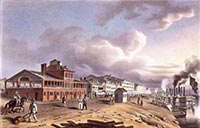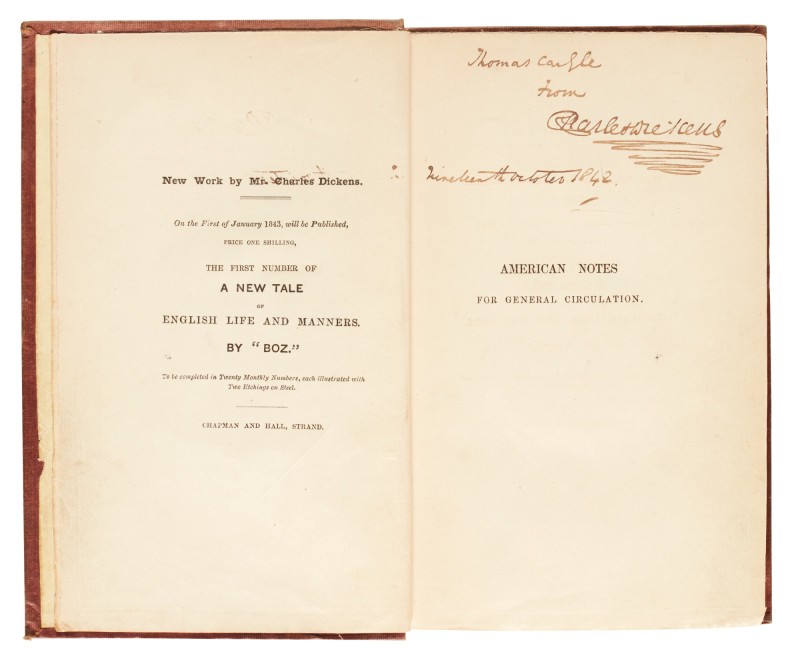“A Jaunt to the Looking-Glass Prairie and Back” left Dickens with mixed feelings. The weather was hot and the journey tedious, but the picnic on Looking-Glass Prairie” was something Dickens wanted, mostly because he had been told that any sightseer should not miss its grandeur. The expedition set out from St. Louis, Missouri, where they crossed the Mississippi River and slowly made their way twenty-five miles eastward to Lebanon, Illinois. They began at 7:00 AM and journeyed so slowly that they reached Lebanon near sunset. The group unpacked at a local hotel in Belleville, a name he uses ironically because the place is ugly. The next day they continued to Lebanon and arrived at 3:00 PM in time to watch a sunset, which was not what Dickens expected.
“It is not a scene to be forgotten,” he wrote, “but scarcely one I think (at all events, as I saw it), to remember.” He liked the green rolling hillsides of England better. In a letter to John Foster, friend and advisor, Dickens confided: “It was fine. It was worth the ride. The sun was going down, very red and bright; and the prospect looked like that ruddy sketch of [George] Catlin’s, * which attracted our attention (you remember?) except that there was not so much ground as he represents, between the spectator and the horizon. But to say (as the fashion is here) that the sight is a landmark in one existence, and awakens a new set of sensations, is sheer gammon. I would say to every man who can’t see a prairie—go to Salisbury plain, Marlborough downs, or any of the broad, high open moor and near the sea. Many of them are fully as impressive; and Salisbury is decidedly so.”
If the landscape was not quite up to his standard, Dickens particularly praised the food. The grand picnic was a feast of “roast fowls, buffalo’s tongue (an exquisitely dainty, by the way), ham, bread, cheese, and butter; biscuits, champagne, sherry; lemons and sugar for punch; and abundance of rough ice,” and “demi-johns” spirits, probably does not identify if it is American whiskey or bourbon. Dickens says, “the meal was delicious, and the entertainers were the soul of kindness and good humour. I have often recalled that festive party to my pleasant recollection since, and shall not easily forget, in junketings nearer home with friends of older date, my boon companions on the Prairie.”
See Charles Dickens. American Notes and Pictures From Italy (New Oxford Illustrated Dickens) New York: Oxford University Press, 1957); John Forster, The Life of Charles Dickens, ed. A. J. Hoppe (London, 1966); Harry Stone, “Dickens’ Use of His American Experiences in Martin Chuzzlewit,” PMLA. LXXII (1957), 464-478
* Dickens and Foster had looked at Catlin’s sketches and paintings in London two years earlier at an exhibition Catlin mounted in the Egyptian Hall, Piccadilly, titled “Indian Gallery” (1840). It’s unclear what particular painting or sketch Dickens is referring to. Certainly, no picnic was included, though Catlin had fully described one in his Letters And Notes On The Manners, Customs, And Conditions Of North American Indians (1842).
Catlin’s picnic occurred in the vicinity of Alton and Dickens in Lebanon— forty-four miles north of Lebanon. Unlike Dickens, Catlin was thoroughly impressed and at ease in dining at a campfire on a patch of grass surrounded by the immensity of “the graceful swells of the prairie.” What neither Dickens nor Catlin knew was that they each picnicked on the prairies in Illinois in the same year.

